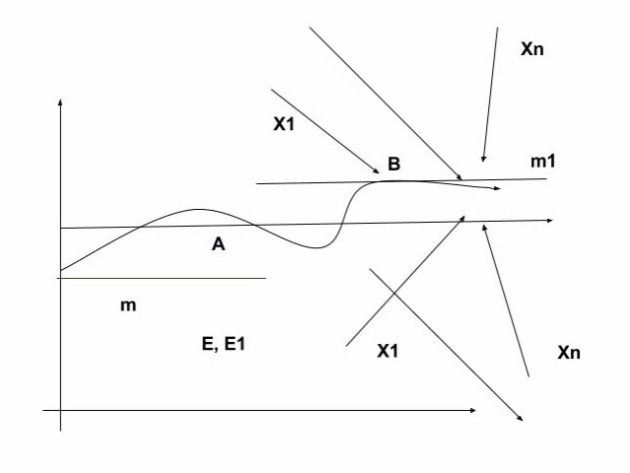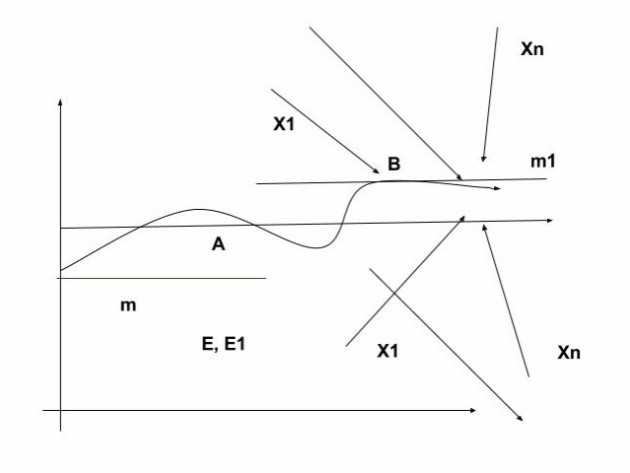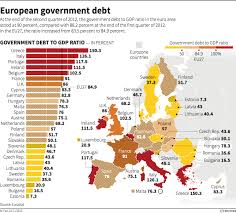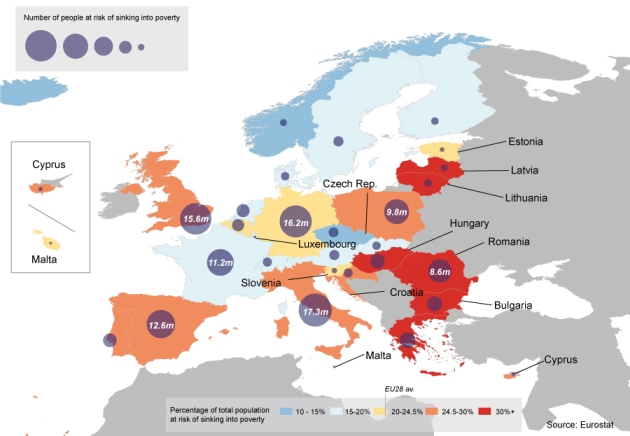(x1, x2, x3, x4, x5, x6, x7, x8, xn) Market Tools: Parameters’ mitigating effect on individual Parts/Sectors acceleration or slow down but also the relation among these parameters themselves; so, when a parameter is added or subtracted to certain value it affects the overall Market Development on a Sectoral and General Equilibrium as well other parameters in the occasion; when having in consideration the UNCERTAINTY PRINCIPLE and the MULTIPLE POSSIBILITIES and apprehensive overview requires QUANTUM COMPUTING capability to do such multi-functional, multi-operational, multi-informational estimation.
The ℑζ– J Constant (0…1…n) is consequential to the implementation in complete of the Market Agents that would give (0…1) ; the (1 to n) is a effect coming up from the proficiency of B(x1, x2, x3, x4, x5, x6, x7, x8, xn) in the execution of a Market Leap or Targeted Project that reflect the specificity of Individual Markets: (example: let’s take a market that is socialized so the more private business inclination will have better effect on the ℑζperformance or the way around: if the market is too privatized that reflects lack of employment: then the adding some social distribution would be more effective). The targets are high business activities to keep full employment using indiscriminately the Market Tools in an ‘as it comes; as it goes’ approach. Even there are countless variations in putting pressure on different Data Indicators: the positive, accelerating business are some that can be considered boosting business activities, employment to the required levels, thus the probabilities are limited and the % of impact vary but is yet limited in varieties: from these possible varieties are extracted the most vigorous for a particular market under its circumstances, development.
Joshua Ioji Konov 2017
ε,ε1x→ε,ε1p = Θ x [ℑζ – ∑(ℑζ x ΙΔ)]1
The Market Tools B(x1, x2, x3, x4, x5, x6, x7, x8, xn) as parameters setup by flexible usage through Market Leaps, Targeted Projects, Carry on Market Policies uses Environmentally friendly technologies, techniques in farming, manufacturing, energies, heating and cooling, garbage disposal, services, transportation to boost Market Development: business and employment, infrastructure and acceptable living standards I.e. alleviation of poverty, elimination of any Earth pollution under sustained Inflation / Deflation ΙΔ|P(-05⇔0.5)

1 μ1 = [μ + (ε,ε1x→ε,ε1p)] = Θ x ∑[ℑζ[A(y1→y7 ) |P(1) +B(x1 , x2, x3, x4, x5, x6, x7, x8, xn ) |P (1→n) x ΙΔ |P (- 05⇔0.5)] _____________________________________________________________________________
(μ1) – it is seasoned Market Development after the gained Entropy, Equity; ε,ε1– Equity, Entropy (x → p) added by the Θ amount invested through – Market Leap, Targeted Project, Carry-on Capital Infusion) multiplied by the ℑζ – J Constant then subtracted by the multiplied ΙΔ – Inflation or Deflation. (see: Example) ℑζ – J Constant is the sum of 2 probabilities; the Market Agents and the Market Tools. A Market Agents implementation A(y1→y7 ) considered probability to 1 B Market Tools probability p(1→n] utilize the B (x1 , x2, x3, x4, x5, x6, x7, x8, xn ) – Market Tools’ probability effect on the Real Market that is most complicated probability that needs Quantum Approach possible by using Quantum Computers – Market Tools are used as probabilities in conditions of implemented Market Agents meaning in high Market Security business environment that allows lower interest lending and high transmissionability of the invested capital. ΙΔ – Inflation or Deflation – acceptable variance p(-05⇔0.5)
B(x1, x2, x3, x4, x5, x6, x7, x8, xn) – Market Tools to accelerated Entropy/Equity
- Quantitative Easing, SDRs;
- Subsidies;
- Low Rate Lending;
- Social Expenses (incl Educational, Pensions, Medicare, Social Security, Unemployment Benefits, etc.);
- Infrastructural Expenses;
- Markets, Regions Parts Equilibrium Monetary Policies;
- Fiscal Policies;
- Sectoral Regulatory interference by Central Banks, International Finance Institutions.
n. Others
The general unpredictability / uncertainty of very complex market forces aggravated by the globalization, rising productivity, improving technologies, transnational corporations global expansion in farming, manufacturing, retail, wholesale, technologies, financing, the Chinese industrialization, and the Internet have brought exogenous for most market forces to improbable complexity that could not be offset by the status quo ideological economics of the Capitalism nor by the Game Theories, nor by the governments taking bigger role in the such orthodox economics’ practices. The self-adjusting Economics cannot prevent crushing recessions like the 2007-9 one, nor accelerate the post-recession rebuilding; under the heavy pressure of possible economic collapse the central banks and governments in the most developed economies have taken highly revolutionary policies such as Quantitative Easing, Subsidies, Bailouts of Banks, Expanding Foreclosures and Unemployment Benefits periods that supposedly would have brought Inflation but instead imploded stagnation; the even chaotic such actions helped the economies to regain some vitality, growth. However, the ideological economics that brought the 2007-9 Recession on the first place regain their ideological grip not being able even to explain what really had happened. The only marketplace that somehow and to a certain extent continued its growth was China that used the tools of economics very flexible on an ‘as it comes; as it goes’ policies principles. The Market Economics go beyond such economic policies into creating a system where the Market Tools are used as Parameters to prompt from one side continuous Market Development of alleviation of Poverty through Environmentally friendly methods, and by having market forces on Micro-market level self adjusting through market competition, and from another whereas on Macro-market level artificially using Market Tools to keep very low Inflation / Deflation.
The improper setup flexible usage of Market Tools might have a different effect on individual markets:
- If exaggerated I.e. incompatible amount of money is invested in a market such can bring high inflation and may even crush it; or
- If not enough of capital is invested in a market that such may bring huge deflation and impoverish even higher percentage of its population
Thus bringing further Earth pollution, with high unemployment, a not properly functioning market.
In this research is strictly stated that individual markets have their specifics, therefore, any intervention: Market Leap, Targeted Project, or Carry on Investment must be done in apprehension of such differences; however, with the required implementation of the Market Agents as stated by previous working papers of these research a existent minimum of a high security market environment would be in place. Despite of such existent minimum the differences, specifications must be taken in consideration in any artificial move on any market. Thus to relativity between individual Market Tools to Inflation / Deflation, and to full Employment, Business activity, Infrastructure (Equity) building is highly improbable to be achieved by the probabilities possible by the existing technologies but through Quantum Computing allowing unreachable in the past compatibility and variations. Thus this Market Economics was called Quantum too, because of its very high uncertainty and demanding complex relativity between a number of factors, possibilities.
The majority of Market Tools could be applied, enforced more to either supply or the demand sides of the occasion – thus to seek balance, first such must be sought on parts, sectoral market basis equilibrium instead of general such as some sectors overheat needing tightening up while others are in the opposite side of the occasion either needing additional boost or at least still in their ways up; second, the one way approach let say the demand side only can prompt quick inflation – instead careful configuration a particular market specifics is needed: let say a market is socialized like the Norwegian one than the pro-private business policies are to balance the market imbalance of a one way development, the opposite distinctions require the other way around thus too rigid privatization while the demand is relatively weak and stagnation sweeps through the Social expenses must be used to offset such extreme situation. It is all about balances under very low Inflation /Deflation – the second particularly distinguishing such economics from the Capitalistic one and the probabilities of high market security market development allow such difference to be possible where the lending rates to small businesses and investors could be very low without compromising with the risk factor requirements. The Market Tools also will have multidimensional effect being invoked by the need for Earth preservation that is not purely market factors but a dominant such that requires actions not necessary in synchrony with the debt controlled current budgetary economics, and therefore, as such artificial factor modulate the global marketplace the Market Tools must be used artificially on Macro-market Level to accelerate, promote, carry-on high business activities, full employment, market balance; thus the quantum uncertainty and multidimentuallity can provide such balances and allow the markets to develop without prompting harmful recessions. The relativity that accumulate by the Market Tools and affects the real economy has been well researched by the current economics though in combinations of multiplicity and international markets (globally) such could not be done first, because the mathematical approaches are limited in such uncertainty and second, because the further developed game theories could not accept multiple factors either even though the Nash Equilibrium and other probability theories were in use. The Quantum Economics i.e. Market Economics goes far beyond single or couple probabilities into ‘n+’ probabilities and the effects on multiple factors on the global marketplace.
_________________________________________________________________
Example 1: you have 10b QE subsidized into public transportation, infrastructure, Social Expenses, Fiscal Breaks, prevailing wages, residence requirements, limited lending to small businesses up to middle size – however, the equipment, materials, energy is produced by large transnational corporations that make it global.
The Market Agents are implemented in the Market!
If for the local market 10b is 10% of the market – the demand side are salaries, business income, social expenses, fiscal breaks, etc – the supply side are the purchases, small business output, services, etc; however, the effect of the global exchange of manufactured equipment, materials, goods, is to retain low Inflation. Thus open market exposure to the globalized marketplace is paramount.
The Market Development is 1. Entropy – Sales, expenses, business activity, employment and 2. Equity – infrastructure, market competition, poverty alleviation, clean environment;
To accelerate Entropy / Equity build up the higher Market Security with the implementation of the Market Agents will be established, however, the flexible ‘as it comes; as it goes’ usage of Market Tools under very low inflation even Deflation will be achieved only by appropriately weighing on the different Market Tools in accordance with the specifics of an individual market.
In this example, the Investment is to change the old vehicles, improve public transportation, provide the needed employment by steering the needed business but also by apprenticeships and expanded public education. The funds are to be disposed by the commercial banks on setup matrix. To alleviate poverty also the social expenses are lifted targeting food, heating, transportation, job opportunities through prevailing wages and residency requirements. Fiscal Breaks on taxation are to have the capital circulate in the Market. In case it is a Targeted Project in a process. There are three requirements for the implementation: 1. Proper preparation 2. Fast execution 3. Not allowing any corrupt or disruption practices.
What complicates this Targeted Project is the necessity for multiple such Projects that must be executed simultaneously on the markets in proximity for 1. To sustain huge movement of people toward Targeted Project 2. To settle employment spread to all areas, 3. To avoid pollution coming with a concentration of people in less developed as infrastructure markets. The Market Economics does not prompt urbanization, industrialization, the concentration of people but the alleviation of poverty by using environmentally friendly methods in place: meaning in some market it could mean manufacturing and services in another farming and services, in third tourism and services to dominate market industries.
Again, all Market Leaps or Targeted Projects are tagged to Inflation / Deflation and therefore to the maximum a Demand-to-Supply internally must be paramount even though the globalized marketplace could sustain serious inflationary pressures by themselves.
The complexity of multiple projects, invested capital, other market tools, and the requirement to sustain low –0.5 to 0.5 Inflation / Deflation must be overcome by taking in consideration the pro-supply projected business, the existing supply local and global capabilities, the rise of demand under these projects that in a pot must avoid ‘big waves’ that can crash the market.
While, in practice, China is using a very similar project approach but on a smaller scale and therefore the results succeeded even impressive compared to the rest of the developed world are very limited in comparison to the probable Market Development under a very aggressive and widespread Market Economics: and what really presses the need for such is the necessities for poverty alleviation to Earth preservation not providing long term allowance. The Chinese experience even extremely valuable in practice, and serving as an example does not provide the needed on the large scale functionality.
In the Example 1: If 10% or 10b USD is invested through Market Tools to steer enough business activities, employment, consumption, building of equity just the implementation of the Market Agents (A) should provide Probability (1) effect on the invested capital so no losses are projected but the Inflation’s deduction, therefore, the Inflation / Deflation should be kept close to (0); the Market Tools effect should add additional acceleration, transmission-ability to the Investment thus adding to ROI, Entropy, Equity in which continuous after the operation business activity, employment, consumption must be achieved; thus, it isn’t about quick in-and-out profit driven operations but a long term Market Development where Equity / Entropy are seasoned: the Detroit’s effect where capital goes through brings profit and when the industrial production technically moved out or was robotized a devastated marketplace was left over; such, effect cannot be environmentally accepted – therefore, it is the service sector along with small business and investors, and the Social and Infrastructural Expenses that are suppose to keep the Market Development running on, the market competition, employment, consumption in check., and the Earth environment clean.
To use environmentally friendly technologies in transportation a very inexpensive public transportation, electric and hydro vehicles, and railroad, water channels, airfreight system must offset pollution; to use such in energy generation – the green energies must become the only source, same with farming, manufacturing, tourism, etc; to offset deforestation the heating and cooling must become elsewhere driven by green energies. The biggest difference between this new Market Economics and the Capitalism is the involvement of the developed economies to swiftly export Market Development all over the global marketplace, to extinguish any pollution, to establish stability by having people engaged in productive activities, having access to jobs and opportunities. Someone will call this research utopian, but actually, it is the only possible way to avoid Earth destruction by using peaceful means, and by saving personal liberties, freedoms and by not letting the government take over the business, life, personal freedom.
The implementation of the Market Agents expands personal management liability, strict environmental protection, consumer and labor such that must stop large transnationals, all businesses from hurting the environment or inflicting human rights violations. But all of this is possible with the expansion of possibilities for productive business activities, market development, prosperity on a global scale.
Joshua Ioji Konov 2017









Recent Comments